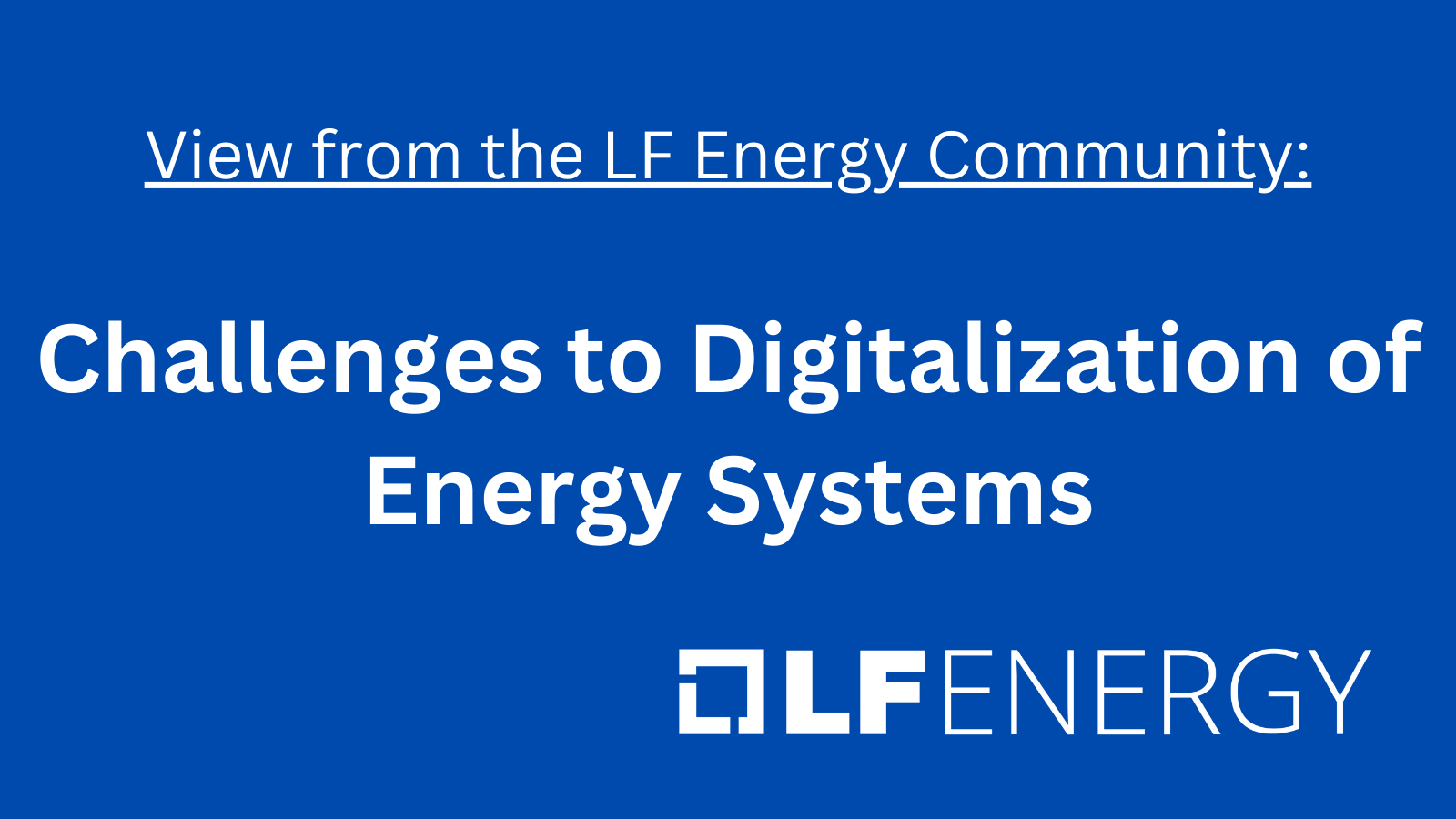View from the Community: Challenges to the Digitalization of Energy Systems
This is the second in a series of articles exploring the technological challenges and solutions to achieving the goals of the energy transition. Drawing on the knowledge of experts from utilities, vendors, technology companies, and researchers in the Linux Foundation Energy community, this series explores the current state of technological evolution supporting the energy transition, as well as the most important trends, biggest challenges, and how to address them. If you have not already, you should review the first article in the series, The State of Digitalization of Energy Systems.
This article assesses the challenges to digitalization of energy systems. The recent Energy Transition Readiness Study from LF Energy and LF Research found that the top concerns are over performance, support, security, and internal expertise which are holding back digitalization generally, as well as open source adoption within energy systems. Other concerns include quality of software, reliability, costs, and understanding of license restrictions.

Microsoft’s Dr. Audrey Lee
From an internal perspective at electrical utilities, Chris Xie of Futurewei noted that there is an entrenched “mindset” and resistance to “cultural change and paradigm shift in the way of thinking about energy”. Microsoft’s Dr. Audrey Lee pointed out a more specific problem related to the challenge Xie noted, specifically in terms of “how utilities rate base for investments”. Digital transformation poses a risk for utilities as they have existing investments, assets, and depreciation which all contribute to their rate base calculations, and moving from an OT to an IT-focused approach disrupts this and can directly affect their profitability.
Martijn Govers of Alliander echoed these points, stating that “existing approaches and their benefits prevent users from wanting to migrate”, as did Dr. McGee Young of WattCarbon, who identified “procurement practices” as a challenge. Seita Energy Flexibility’s Nicolas Höning followed on by saying, “actors need digital solutions in the short-term, but hold back as they know investments in energy systems are long-term,complex decisions due to lock-in effects and unknown future developments.” Essentially, the internal challenge of maintaining profitability and not stranding assets and investments has created a reluctance to embrace digitalization.

RTE’s Boris Dolley
Utilities also face regulatory challenges. Mike Heinen of AspenTech noted the challenge of “interpreting and applying energy regulations in light of modern innovations such as cloud and containerization.” Lee also mentioned the need for “regulatory reform, including North American Electric Reliability Corporation Critical Infrastructure Protection revisions.” Tamás Russ of SprintEins also mentioned “bureaucracy and red tape” as a challenge, and Govers pointed out “different countries have different approaches,” which complicates issues of regulatory compliance even further. “Standardization is the way to succeed,” according to RTE’s Boris Dolley, however he continues that, “international standardization through the classic approaches of IEEE, ISO or IEC is far too slow when it comes to the digital layer of electricity.” If different geographies continue to use vastly different regulatory regimes and standards bodies lag, it makes it nearly impossible for utilities to digitalize in an efficient manner.
Of course, there are also technical challenges. Höning points out several, including “connecting data from different silos and syncing different data models, cybersecurity concerns, and, for rollout at scale such as to individual homes, we are missing affordable but also reliable gateways.” Govers notes, “fallback mechanisms become even more important as most AI solutions are fairly poor at considering feedback mechanisms, but are not sufficiently considered.” And Young identifies the challenge of “connecting the built with the virtual environment.”
Heinen also identifies the problem of the “distance and disconnectedness between individuals planning and operating the power grid, such as power system engineers and operators, and the individuals ‘digitizing’ like software designers and developers” as a technical challenge. And in terms of electric vehicles and how to charge them, PIONIX’s Robert de Leeuw notes “demand response protocols between distribution or transmission system operators and charge point operators are not yet set up and defined.” Heinen points out a related issue, caused by a “lack of effective energy storage and strain on generation and transmission capacity from electric vehicles.” More work clearly needs to be done to both develop the technologies needed to complete the energy transition, and to educate the industry about these solutions.

RWTH Aachen’s Dr. Antonello Monti
In terms of education, the LF Energy community also noted knowledge and training challenges. Dr. Antonello Monti of RTWH Aachen comments that a “lack of enough people that can actively work at this transition” is a challenge. Alliander’s Jonas van den Bogaard also points out “the scarcity of IT specialists”. Other industries that have undergone digital transformation have faced similar difficulty with staffing, as existing teams required significant training to build and maintain digitalized systems. Utilities and other energy stakeholders will have to invest in reskilling and recruitment of IT specialists to complete this process.
Overall, experts from the LF Energy community identified the main challenges of digitalizing energy systems as entrenched mindsets and practices, regulatory constraints, technology, and staffing. The next article in this series will dig into technology specifically, and the trends that will help drive digital transformation of energy in the coming years, with the series then turning to the part open source has to play.
